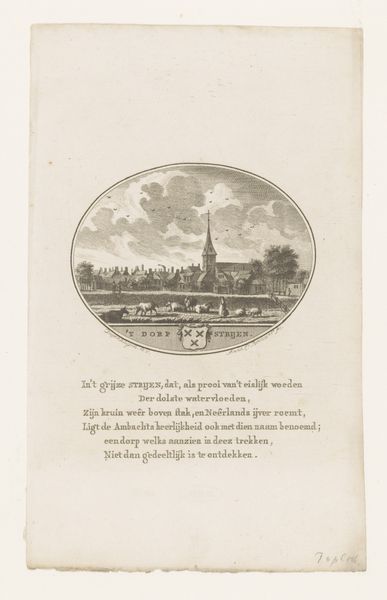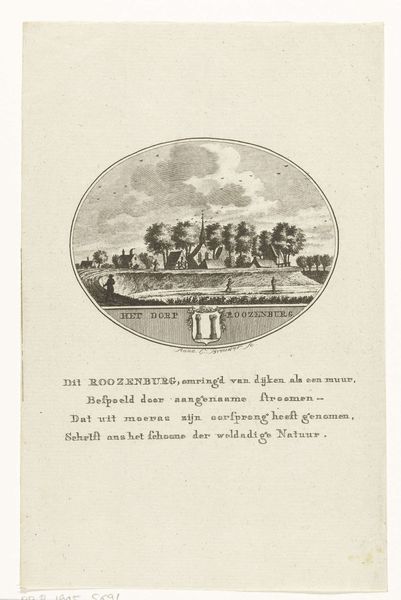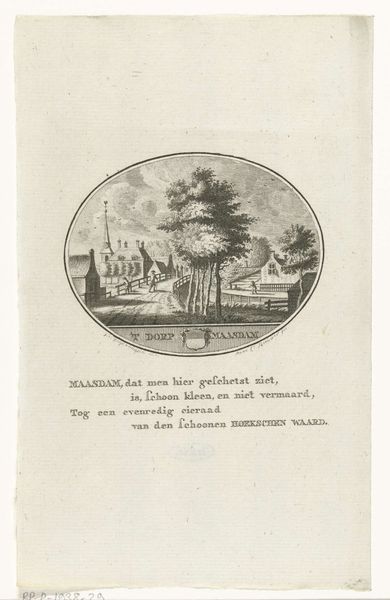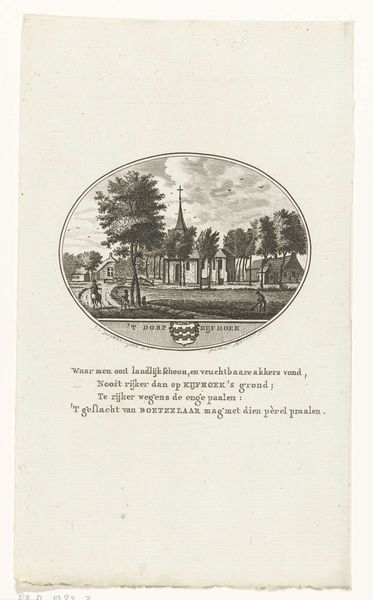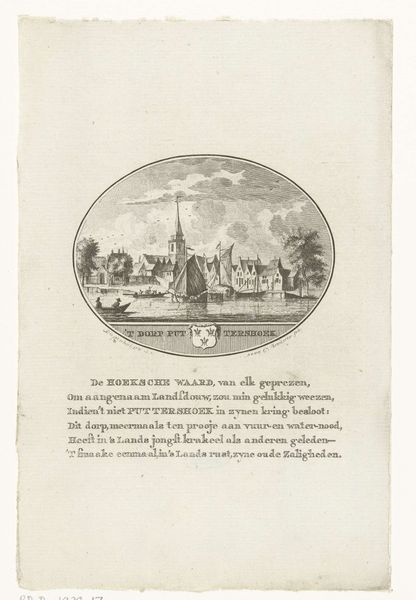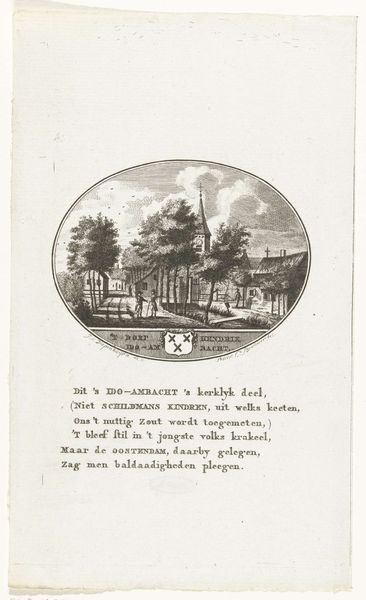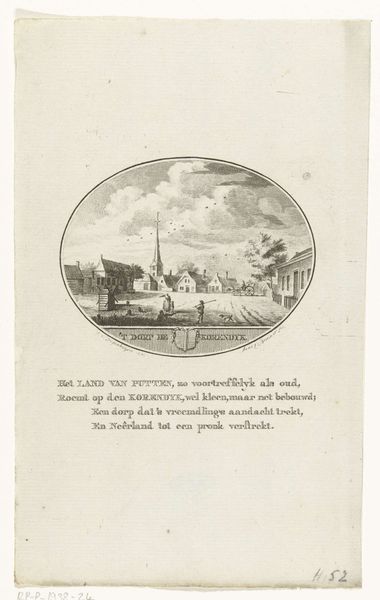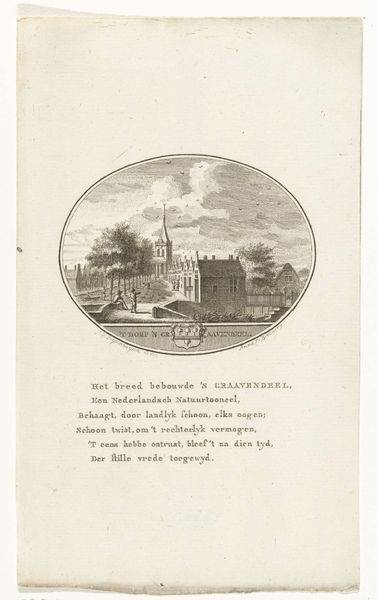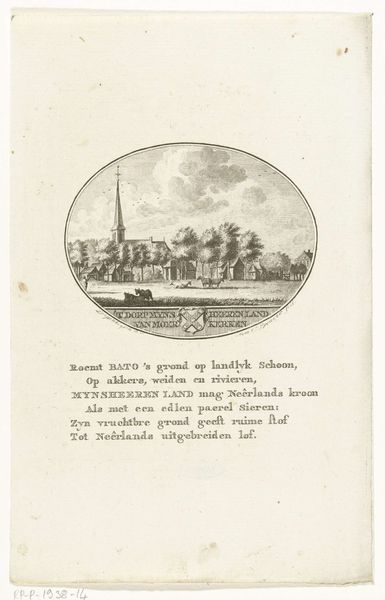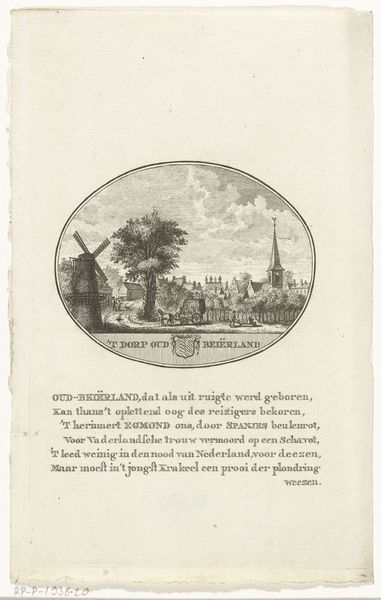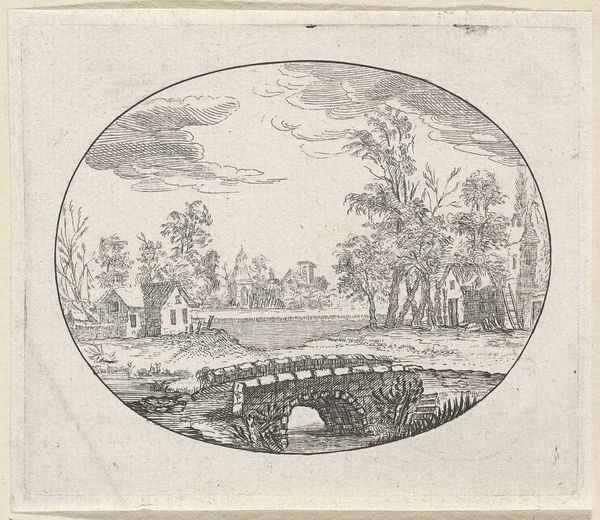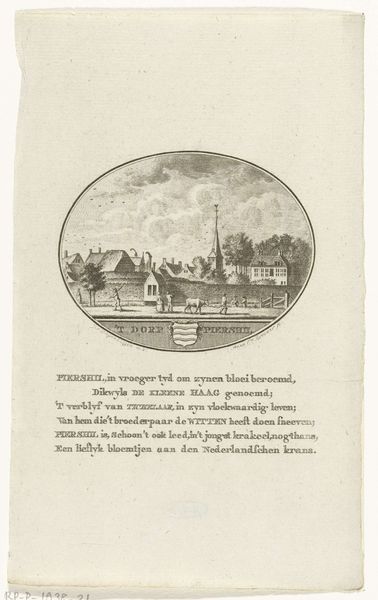
print, engraving
#
dutch-golden-age
#
neoclassicism
# print
#
landscape
#
cityscape
#
engraving
Dimensions: height 220 mm, width 140 mm
Copyright: Rijks Museum: Open Domain
Curator: This engraving from somewhere around 1796 to 1798 is titled "Gezicht op het dorp Heenvliet," or "View of the village Heenvliet." The artist is Anna Catharina Brouwer, and it’s currently held at the Rijksmuseum. My eye is immediately drawn to the composition, its almost perfect circle focusing on the village scene. Editor: The most immediate thing that strikes me is the flatness. There's an almost naive quality to the perspective that throws me back to earlier, pre-industrial printmaking techniques. I'm really curious about the engraver’s tools and workflow. What presses would have been available at the time? Curator: I think that flatness contributes to the idealized vision of the Dutch Golden Age here, or at least a nostalgic nod to it mixed with emerging neoclassicism. Heenvliet, rendered in precise lines, is positioned against the broader canvas of Dutch social and political tensions of that time. Editor: So, beyond the aesthetic of nostalgia, is the print potentially making a political statement about Dutch identity, or a perceived loss of tradition, perhaps, given the turbulence of the period? Is it a souvenir? Commemoration? Critique? What function was this intended to fulfill within Dutch society at this time? The print quality gives off signals too: was it affordable, and accessible to the middle class, or aimed at wealthy patrons? Curator: I agree it points toward national identity but with nuanced intent. The depiction of the village, pastoral elements of cows grazing, and the lone figure evoke a sense of tranquility contrasted with a politically tumultuous period. As the poem written underneath indicates in old Dutch, the city used to be better. The location’s transition and its symbolic role would have resonated among those acutely aware of shifting political sands and also provides insights into local pride, as it showcases Brouwer's own hometown and its rich although slightly bygone historical identity. Editor: It would be very interesting to study the engraving techniques used and determine how mass-produced it was—and to delve further into its circulation within Dutch society to better grasp what level of popular engagement with Brouwer’s political statements the work achieved at the time. It almost asks you to question if the idyllic facade truly represents what it seems. Curator: Exactly. By observing her material practice in connection with the social setting, Brouwer successfully intertwined place and the discourse of its day together. Editor: I completely agree. Thinking through all these contexts makes the quiet image remarkably potent and loaded with historical meaning.
Comments
No comments
Be the first to comment and join the conversation on the ultimate creative platform.
